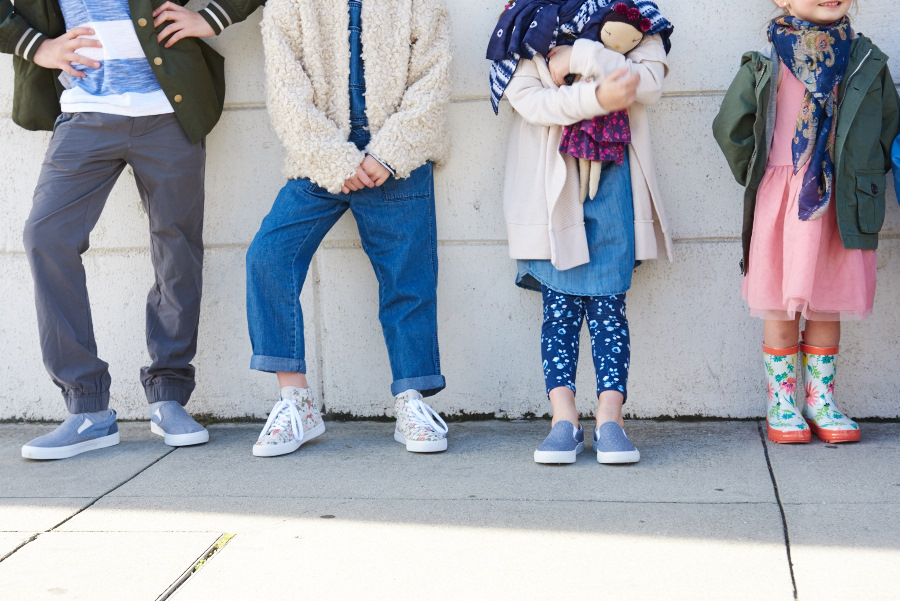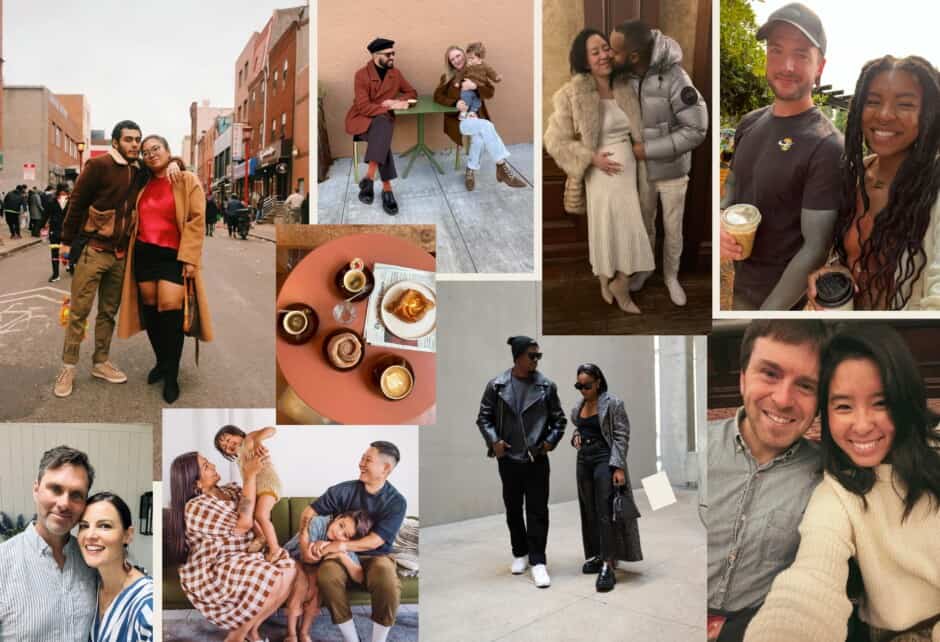
Asking for a Friend: Help! My Kids Only Have White Friends
Written by
Photography by
Photographed by Maria del Rio
Welcome to Asking for a Friend, our new column where we track down answers to your most burning (and sometimes awkward) questions. To answer this week’s query, we called on Dr. Akilah Cadet, an expert in diversity, equity, and inclusion, an executive coach, and the founder of Change Cadet.
Q: I live in a homogenous suburb (Palo Alto) and I hate that my young kids only have white friends. I used to live in the city and always had a pretty diverse friend group, but now I live in a sea of straight white people and am bothered that this is my kids’ (and my) new reality. How can I expand our social circle to be more diverse?
A: I am glad you see the value in diversity! Children start to identify as part of a culture, ethnicity, religion, or group at a young age. When kids are surrounded by different people, they learn how other people live and learn to respect and appreciate people who may not look, live, or talk like them. Of course, this is easier to do in some cities than others. It’s hard being in a primarily white environment. Trust me, I know. I grew up in a predominantly white neighborhood, and my twin sister and I were the only Black kids. Since our school was mostly white, my mother knew there was value in diversifying our friendships outside of school. She had to do things differently in order to make sure we could connect with and learn from other kids of color.
Of course, a white woman looking for diversity for her white kids is different than a woman of color looking for diversity for her kids. And while I am not positive which camp you fall into, I’m going to go ahead and guess, and gear this advice towards white mothers. Here’s why: As women of color, we are taught how to diversify our children’s life and friends. We must acclimate to white spaces all the time, therefore we seek out diversity in order to find fellowship and offer support to one another. This trickles down to our children.
So for you, I would start with seeing what programs, playgroups, parent organizations, and clubs are in your area. There are bound to be many, but do your research: Be direct and ask beforehand if they have a diverse membership and include cultural experiences different from your own. For me, my mother signed us up for Jack and Jill of America, an organization that provides social, educational, and cultural experiences for Black youth. My sister and I were able to befriend other Black children in our city, but more importantly see other people like us. When your kids are of color, it is incredibly important for them to see other children that look like them. This is important for their overall development, confidence, and cultural understanding of who they are.
And while your particular neighborhood may be a sea of white, I know that’s not true for greater Palo Alto. East Palo Alto (EPA), part of the Palo Alto neighborhood, is home to many Black and Brown kids and offers a multitude of STEM programs, park and recreation services, and cultural activities that your kids would be welcome to participate in. This is true of most neighborhoods of color, as grants and programs are commonly placed in urban areas. Check out what’s going on just outside your own neighborhood to develop new friendships, both for your child and yourself.
Speaking of friendships, it’s also time to take a good look at your own friend group. Are your friends diverse? If so, start there for establishing playgroups. But if your friend network is also homogeneous, that could be a big part of the problem. Parents should model the behaviors that they want their child to have. By taking time to add new friends from a culture or color different than yours, you have a strong possibility of connecting with their children and their friends. You may also learn a thing or two along with your child in the process.
Second, don’t be afraid to travel for diversity. Museums are excellent ways to access interactive cultural programming for children and parents. Spending time at museums that celebrate diversity, like Latinx, Asian, or African American history, are great ways to make some new friends, participate in camps, and have diverse family fun. Art is a wonderful way to introduce and celebrate cultures other than your own. Be open to travel to a new neighborhood, area, or city to experience something different. But listen, I live in the Bay, too (I chose to settle in Oakland specifically for the diversity). It may seem like a journey, but every once and a while, reconnect with the diverse groups and friends you left in San Francisco. Take advantage of the network you left. The reality of the situation is that Palo Alto and other suburbs like it is, like you said, straight white people, so sometimes you’re going to have to get straight out of there.
Don’t be shy about asking your friends of color who have kids what they do to assure their children have culture in their lives or if they have friends down the peninsula that they could connect you with.
Lastly, think about your child’s media choices at home. There are lots of kid-friendly movies and TV shows the highlight Black and Latinx culture. And books! So many great bedtime books! I highly recommend Vashtie Harrison’s Little Leaders books, Be Kind by Pat Zietlow Miller, and Susan Verde’s I Am Human. Not only do they highlight people of color, but there is a focus on kindness, celebrating differences, and women, too! The more you show your little one that people come in all different shapes and sizes, the more they will build inclusive friend groups as they grow. Remember, your children learn about diversity and discrimination from you, making it important for you to be the best role model you can be.
Encourage conversations with your child about differences in their playgroups when it comes about race, ability, and language, then celebrate them together. Do all of this, and you’re off to a great start!
Dr. Akilah Cadet works with VCs, startups, small business, foundations, and nonprofits to assure diversity, equity, and inclusion strategies that support women, people of color, and the underserved in the workplace. As a Black woman, she uses her personal and professional experiences, as well as a touch of Beyoncé, to inspire her work through talks, coaching, strategy, facilitation, and organizational change. Although she looks forward to being a mother some day, she has co-parented her brothers, both of whom are now in college and conditioned to retire her early.
Have a question for our experts? Email us at [email protected]. We’ll publish all queries anonymously because we know—you’re totally asking for a friend.
Leave a Reply to Lee Cancel reply
Share this story





I am really grestful for this answer. This is a topic I’ve never quite known how to approach discussing, as some of my friends of color have expressed discomfort with white people stating plainly that they are proactively trying to diversify their friend group, there has always felt like a bit of a catch 22 with this for me. We of course want to have a diverse group of friends, but this often still doesn’t come naturally for many people, yet it feels like there is something inappropriate or insensitive about seeking out people of color to befriend. Two years ago we lucked into living in what I consider the most ideal community and are now very fortunate to be raising our young children in an environment that is diverse not only ethnically and culturally, but economically as well, with everyone connected through the shared experience of being students at the same university. As someone who grew up in an entirely white Christian neighborhood, it is interesting to observe the difference in my children’s developing perspective of people and the world as all of their friends are from different religious backgrounds, many speak different languages and are from different countries and cultures. In my sons kindergarten they use “people crayons” to discuss skin tone and identity. Around Martin Luther king day my son became very passionate about what he was learning, and in discussion it was revealed that he actually had no idea who was referred to as “black.” My husband has black hair and olive skin and my son thought this meant he counted as black. My children’s four closest friends, our direct neighbors who are at our home all the time, are biracial, with African mothers and white fathers. I suddenly realized how complicated it felt to attempt to explain this identity to him, as I am glad he doesn’t naturally see people in categories and in anyway different from him, I attempted a simplified history of slavery and civil rights to explain what it meant to be black. I really look forward to seeing how their world views develop growing up in this setting.